Winning website traffic is hard. So when your marketing starts paying off and those traffic numbers start increasing, it can be disappointing to find these new visitors are not making a purchase. There are loads of potential reasons that your users are not becoming customers and they typically fall into one of the following categories:
- Problems on the website itself
- The wrong sort of traffic
- Trust or reputation problems
- Product, pricing or offering problems
We'll delve into these categories and uncover key reasons users don't buy and what you can actually do about it.
Why users don't Buy - our Survey Findings
In July 2019 we asked 1,000 people in the UK what might stop them from making an online purchase. This is what they told us:
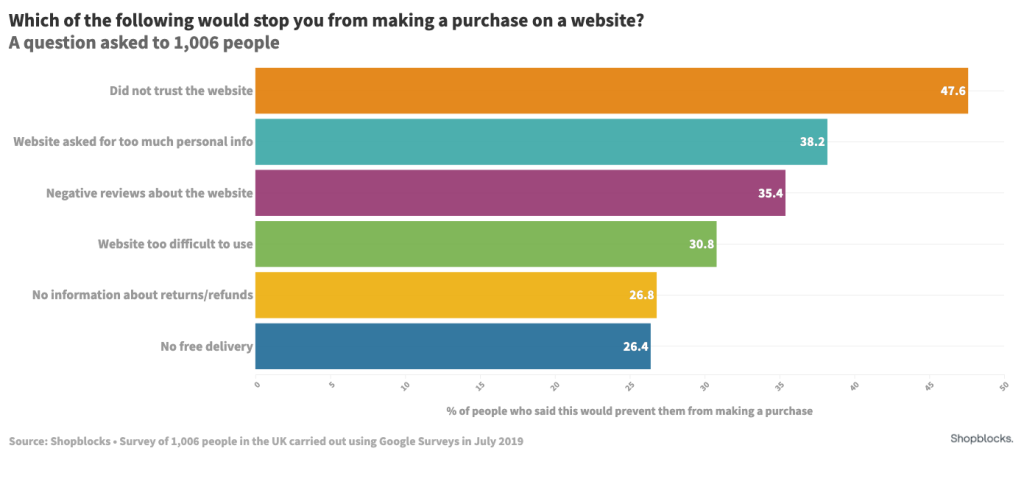
- Almost half of those who responded to our survey said simply "not trusting" a website would prevent them from making a purchase
- 38.2% are put off by being asked for too much personal information
- 35.4% wouldn't buy if they found negative reviews about the site
- 30.8% won't convert to customers if the website is too difficult to use
- 26.8% will stop before buying if they can't see information about returns and refunds
- 26.4% won't convert if there is not free delivery option
1. Problems with your Website
Buying on any e-commerce website should be easy.
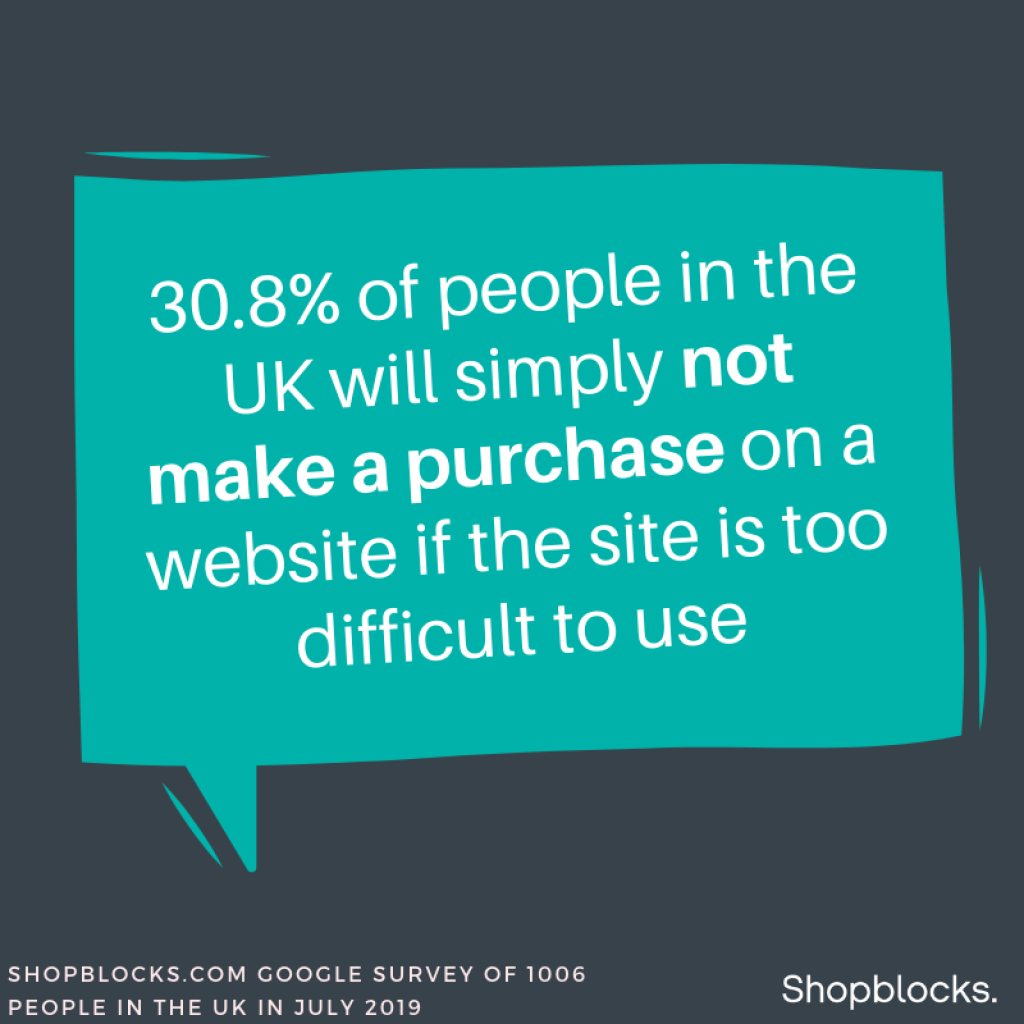
If we're expecting people to make a purchase, then we need to make sure the process of doing so is quick and simple. So if you find that you're getting an influx of traffic but that this new audience isn't buying, then it's a good time to start analysing how easy you're making it for users to actually buy from your website.
Google Analytics
If you're familiar with Google Analytics, then there's plenty of information that can be helpful here including:
- Which pages people do make purchases from vs which they don't
- Whereabouts during the buying process people are dropping off
- Which devices people are using when they convert vs when they don't
This can give you some headline information about whether things are going wrong for certain types of devices, just for certain pages or whether it's a problem across the site.
If you're not familiar with Google Analytics but you do plan to measure your own website's performance, there are loads of free online courses to get started with, including Google's own.

When Google Analytics doesn't tell us what's going on
Google Analytics is often great at telling us what's happening on the site, but it can't tell us why.
Perhaps a dig into Analytics data reveals a problem with a page not loading during the check out process from time to time. But in many cases, it may be that the problem isn't particularly obvious.
At this point, we need to go further.
Go right through the check out process yourself and rule out any technical glitches or problems, or misleading copy. Go through on different devices and get the help of people you know to do the same sort of thing.
Tools like Hotjar let you view video playback of user sessions on the site so you can watch how people actually interact with the site.
Again, this is decigned to help you uncover visible problems.
Is your Checkout Process as concise as possible?
38% of our survey respondants told us that they don't like to be asked for too much personal information. So ensure that you're only asking for information you need in order to complete the transaction.
Is your Website fast?
Google doesn't like slow websites and neither do users. If your site is slow or laggy, you can expect would-be customers to give up and try elsewhere.
A 100 millisecond delay in your page loading could diminish conversion rates by 7% and 53% of users will leave a page if it takes more than 3 seconds to load.
Test your site using some of these free tools:
Don't just test your homepage. Look at category pages and product pages too.
2. The Wrong Sort of Traffic
This is a really common cause of low conversion rates. Let's say you sell small red rucksacks and a user heads off to Google and types in "small red rucksacks." If they land on a page on your site that shows them all the small red rucksacks you sell, then we'd expect a reasonable chance of this user making a purchase.
The query there implies they want to buy something that you sell.
That's "commercial intent traffic." They're shopping.
On the other hand, if a user just happens across a link to your website or a blog post of yours on Facebook while they're watching videos or scrolling through photos, we might expect a lower conversion rate. This user wasn't shopping or actively looking for product.
Of course, product specific ads on social media can yield excellent conversion rates with clever targetting so it's not to say all traffic from any given source behaves one way or another. But what you need to do is:
- Understand where your traffic is coming from and where on your website it is going to
- Ask yourself whether, with this in mind, those users are actually shopping or researching (or maybe neither!)
There's immense value in having content on your website thatis informative rather than salesy (and the benefits of that are for a whole other post). But we should expect different behaviour from users landing on a product page while actively looking for something to buy versus users stumbling on a blog post somewhere that's more informative than product led.
If you've seen a large influx of new traffic but it isn't buying, consider whether it's the right sort of traffic with shopping intent. We need to adjust what we expect of users based on what type of traffic they are.
3. Trust and Reputation Problems
The majority of consumers check reviews before buying. Whether it's TripAdvisor for hotels and restaurants, or Google, Facebook or TrustPilot for products or services, we actively seek them out.
We want to make sure that we're buying something that does what we want it to from a reputable and trustworthy provider when we're parting with our hard earned cash.
But our online reputation can extend to more than reviews too! In whatever context people talk about you online, if they're mentioning the name of your brand in online content, there's a chance of prospective customers finding it and using it to help them form their opinion about whether they can trust you.
Tracking your Online Reputation
Google yourself.
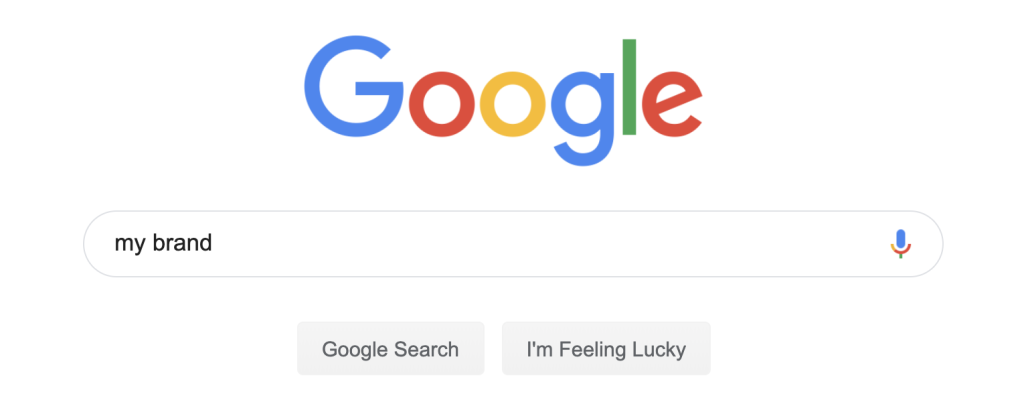
And don't just Google your brand name on its own. Also search:
- {Brand Name} Reviews
- www.{websitename}
- Misspellings if your brand name is commonly misspelt
Knowing what prospective customers see when they go digging for information is the start!
Ideally, a search for your brand should reveal a first page where many of the assets are controlled by you - things like your website, Facebook Page, Twitter profile and so on. But there's almost always third party content like review platforms that will feature too.
Online Reviews
The biggest review platforms tend to feature well in Google (think TrustPilot, for example). So trying to simply push these out of the results isn't always an option.
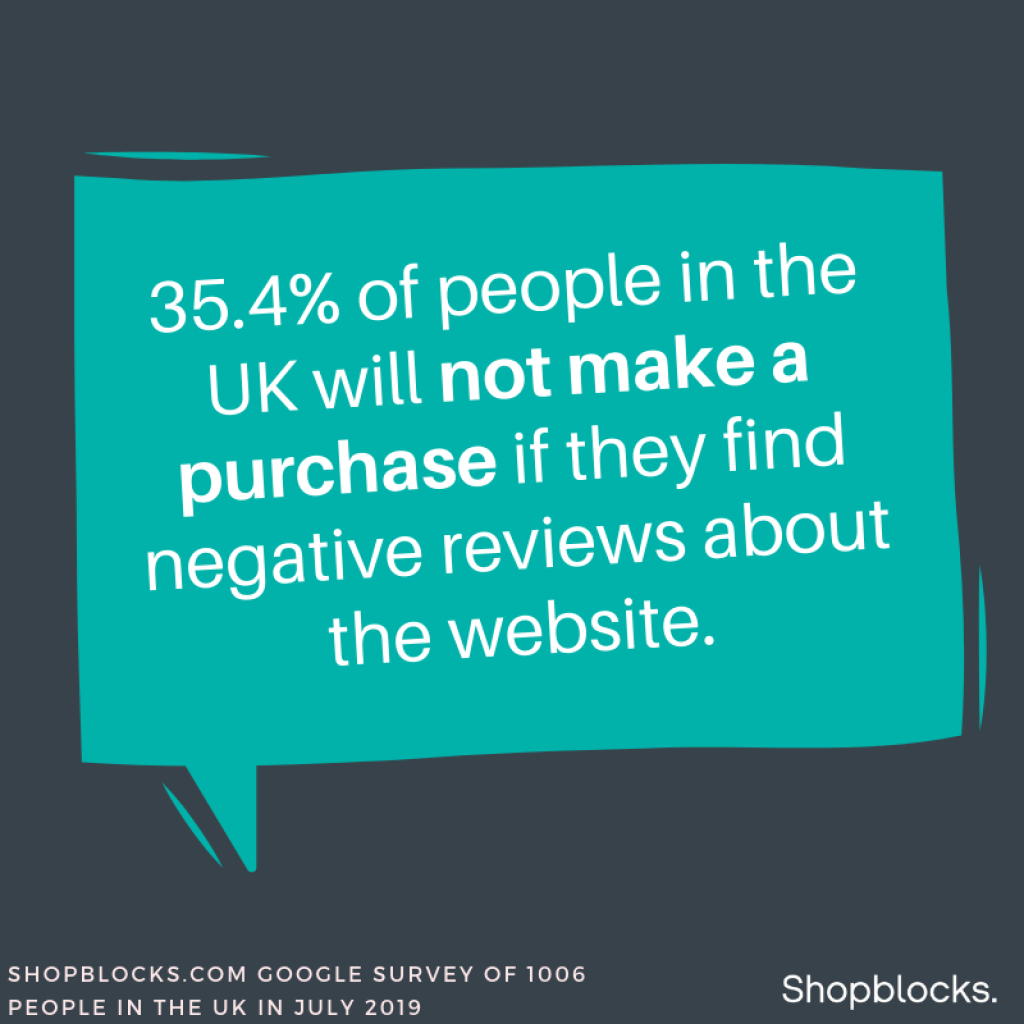
35% of people in our survey said they wouldn't make a purchase if they found negative reviews about the website. But that doesn't mean the other two thirds would purchase regardless. We can assume many would simply go on to look for more signals.
There are a few things to bear in mind when it comes to online reviews about your brand:
- Users actively go looking for them. So simply trying to hide them can be fruitless
- Before delving into individual reviews, users see an average first (on most platforms). So 1 poor review from an unhappy customer will be relatively insignificant in amongst 99 happy and glowing reviews from satisfied customers.
- Most platforms let you publicly respond to reviews and this can be an opportunity to try and resolve the matter or, in the very least, put your side over. Making a proactive effort to open a conversation with an unhappy customer shows you care. Simply ignoring negative reviews (or replying spitefully - don't do that!) isn't a good idea. Show willing to go the extra mile to make customers happy and you might even be able to turn a negative review into a positive
- Encourage your happy customers to review. You may have a handful of negative reviews but hundreds of silent happy customers. Encourage happy customers to share their thoughts too so prospective buyers see a fairer representation online
Trust Signals
A whopping 47.6% of people said they wouldn't make a purchase if they simply did not trust the website. There can be all sorts of reasons why someone might not trust your site and sometimes "trust" is just a feeling we get. But that doesn't mean we cannot influence it.
The use of "trust signals" on your website can influence conversion rates and the likelihood of people buying.
Reviews on your Website itself
We know that negative reviews can be a turn off for a prospective buyer. But positive reviews can have the opposite impact. Loads of big retailers take advantage of featuring reviews on product pages. This is a prominent feature of Argos product pages, for example:
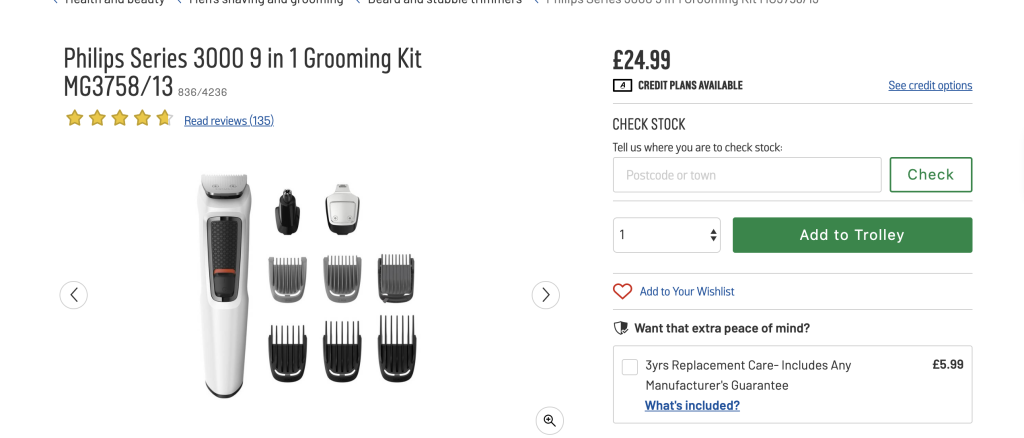
Contact and Business Details
Show users you're an authentic business. Clear business address, telephone numbers and similar show users that if they have a problem, they can contact you. Make it easy for users to find out how to contact you.
Reassurance About Payment
Displaying the logos of the payment methods you accept shows users familiar brands they do trust. Including information about how payments are made secure on your site can help to overcome any uncertainty from users about whether their card details are safe.
Where have you been Featured?
If your products have been featured in well known publications, shout about it! The familiarity of these logos can be a great trust signal and users can feel confident that you're being talked about in all the right places.
Our customer, Jimbag, does this really well:
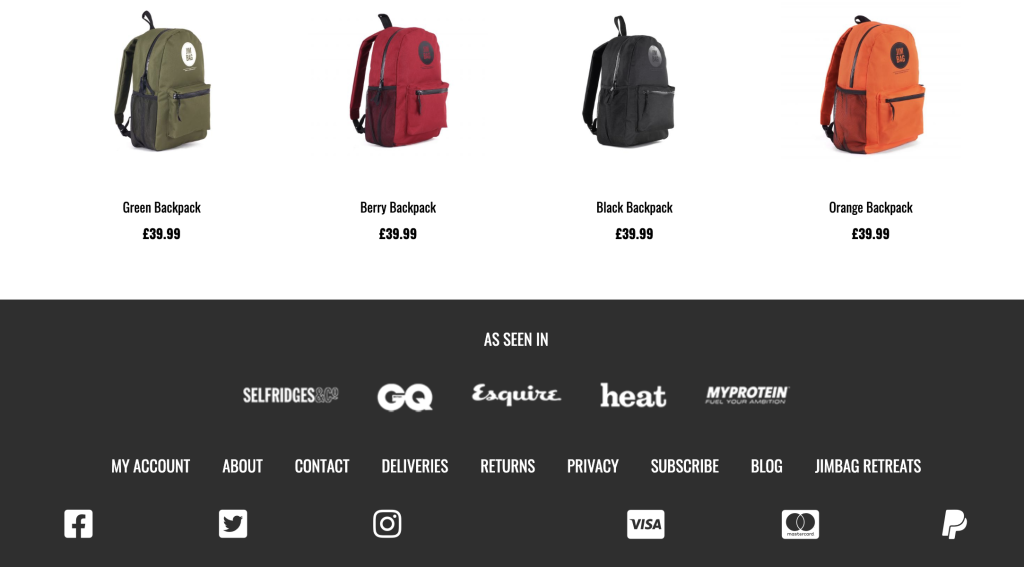
Clear Refund and Returns Policies
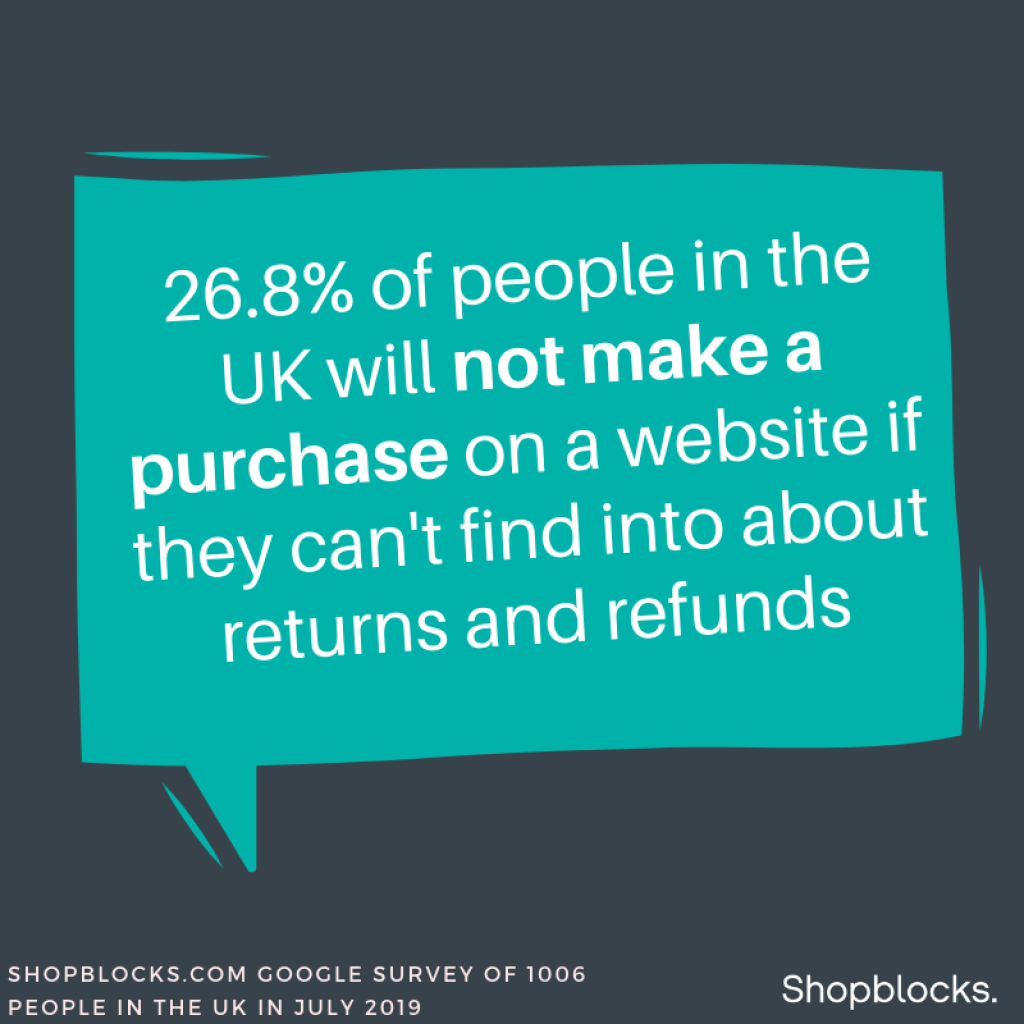
Over a quarter of people simply won't make a purchase if they can't spot the returns information. Refunds and returns information is a key trust signal, highlighting to users that there's a process in place if there's a problem with their purchase.
4. Product, Pricing or Offering Problems
Product, pricing or offering problems can be a real turn off for your potential customers. This includes things like:
- The product isn't what someone was looking for
- Your pricing isn't competitive (where a product can be compared with something else similar or like for like)
- Your delivery is expensive or the pricing is over complicated
Pricing Problems and Fixing Them
Of course, not every market is price sensitive and you may not even have a product with a like for like competitor on the market. So not all of the above will apply to everyone. But if you have products the same as or similar to others widely available on the market, price analysis will be essential.
You can do simple checks with no tools by finding similar or the same products on Amazon and price checking them. Another method of quick price comparison is typing the name of the product name into Google and going to "Shopping".
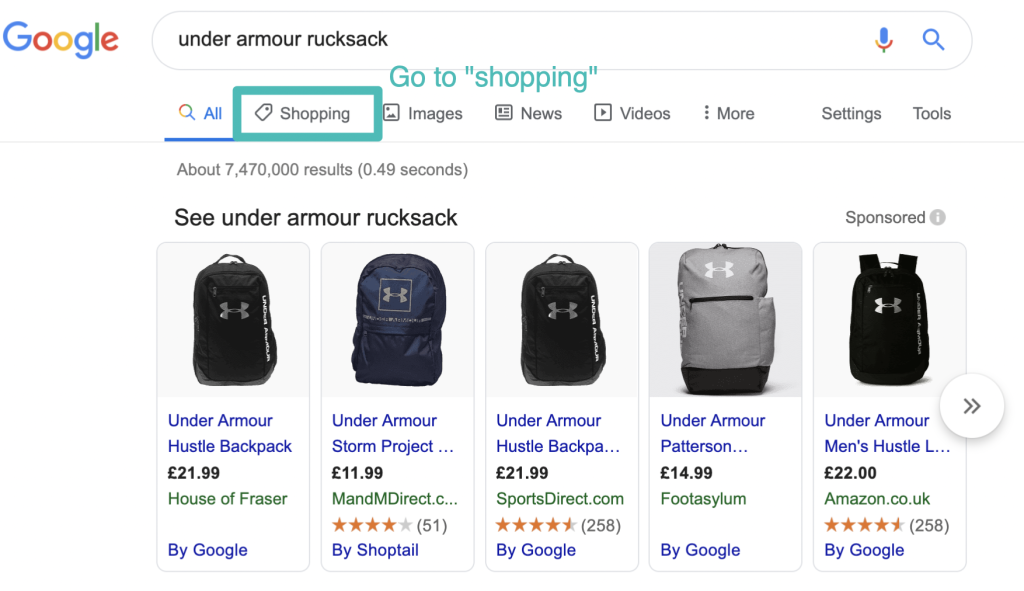
You'll then see a complete list of matching products and prices taken from advertiser shopping feeds so you can see in a glance how similar products are priced with different retailers.
Organise by price to make this easier and use filters to find products the most similar to yours.
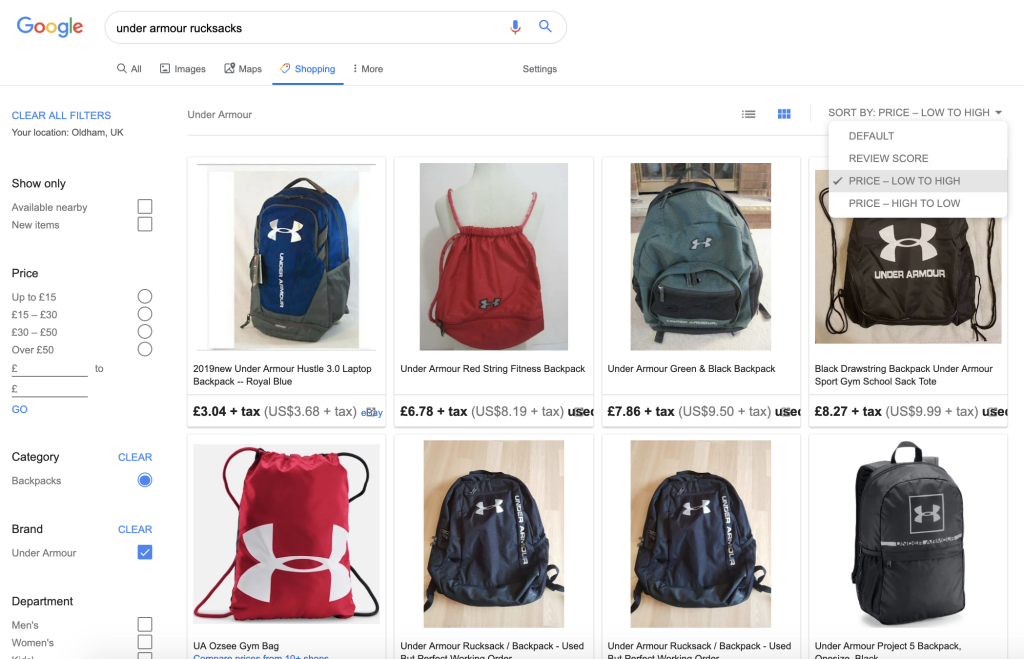
Online shoppers are savvy and compare prices. So if products the same as or similar to yours are priced much lower, this could cause problems getting users to buy from your site.
This is typically less of a problem with products exclusive to you or particularly premium end products without other like for like products widely available.
Spend time on your pricing strategy taking into account cost of sale, other additional costs and what buyers are realistically likely to pay for a product like yours.
Free Delivery

More than a quarter of people who responded to our survey said that a lack of free delivery would stop them from making a purchase on a website.
It seems a good chunk of us simply don't like to pay for postage.
It's nothing new. In fact, in a 2006 study published by the University of Pennsylvania, 60% of retailers cited "free shipping" as their most effective marketing tool.
Of course, footing the bill for this yourself, particularly on bulky items, can eat into your margins. But another model to consider is building the cost of postage into your product pricing.
Getting them Buying
Understanding conversion rate is a big job and improving yours is an on going thing. Websites generally evolve over time and your understanding of your website's users improves too. But start by eradicating any obvious problems, improving trust and monitoring what people say about you online.














